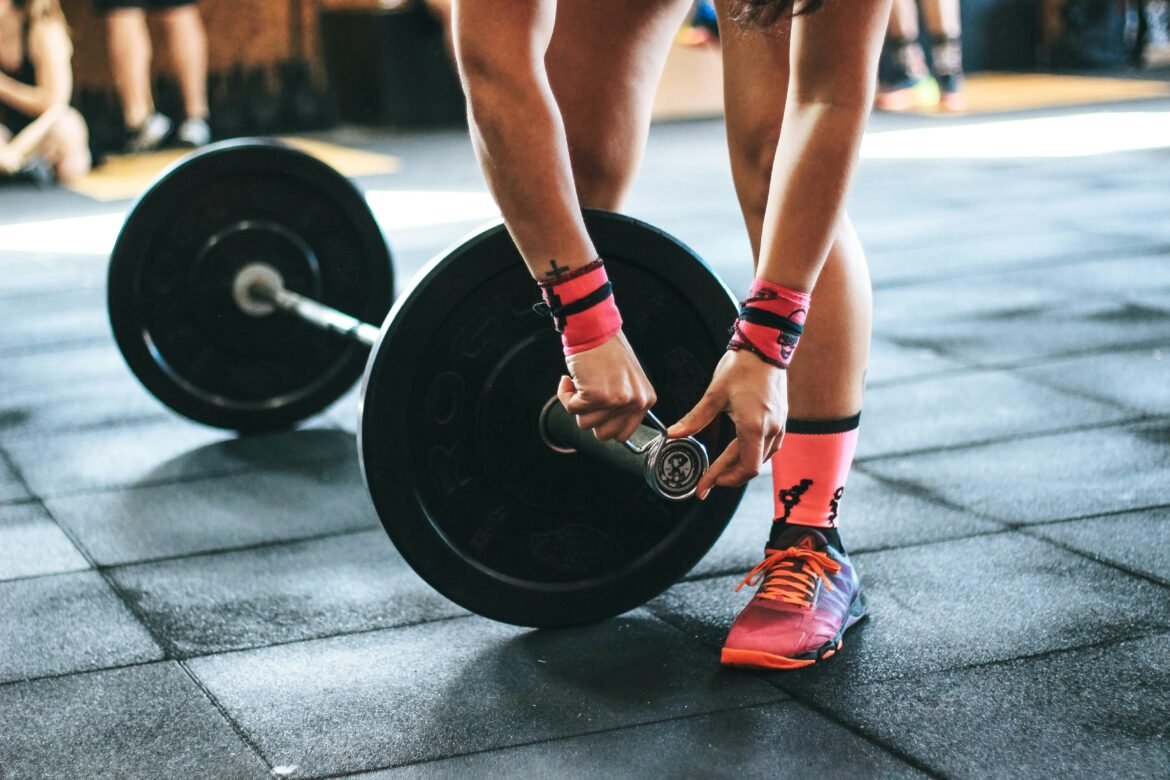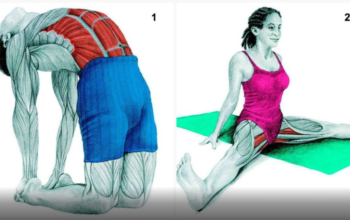High-Intensity Interval Training, commonly known as HIIT, has taken the fitness world by storm. This training method, which alternates between short bursts of intense exercise and periods of rest or low-intensity activity, is praised for its efficiency and effectiveness. Whether you’re aiming to lose weight, build muscle, or improve cardiovascular health, HIIT offers a time-saving solution that can be tailored to fit various fitness levels. In this article, we’ll dive into the benefits of HIIT, explore best practices for getting the most out of your workouts, and provide some sample routines to get you started.
The Benefits of High-Intensity Interval Training
HIIT’s popularity is not just a trend; it’s backed by science and proven to deliver impressive results. Here are some of the key benefits of incorporating HIIT into your fitness routine:
Efficient Calorie Burning: One of the most significant advantages of HIIT is its ability to burn a high number of calories in a short amount of time. Because of the intensity of the workouts, your body continues to burn calories even after the exercise is completed—a phenomenon known as the “afterburn effect” or excess post-exercise oxygen consumption (EPOC). This makes HIIT an excellent choice for those looking to lose weight or maintain a healthy body composition.
Improved Cardiovascular Health: High-intensity interval Training has been shown to improve cardiovascular health by increasing the heart’s efficiency. During the high-intensity intervals, your heart rate spikes, and over time, this can lead to better endurance and a stronger heart. Studies have found that HIIT can reduce blood pressure, lower cholesterol levels, and improve overall cardiovascular function more effectively than moderate-intensity continuous exercise.
Muscle Building and Retention: Unlike steady-state cardio, which can sometimes lead to muscle loss, HIIT workouts often include strength training exercises that help build and retain muscle mass. By incorporating bodyweight exercises like squats, push-ups, and burpees into your HIIT routine, you can simultaneously burn fat and build lean muscle.
Time Efficiency: One of the most appealing aspects of HIIT is its time efficiency. A typical HIIT workout can be completed in 20-30 minutes, making it ideal for those with busy schedules. Despite the short duration, HIIT’s intensity ensures that you get a full-body workout that challenges your cardiovascular system, muscles, and metabolism.
Versatility: HIIT can be customized to fit individual fitness levels, goals, and preferences. Whether you prefer running, cycling, swimming, or bodyweight exercises, HIIT can be adapted to suit your needs. This versatility makes it accessible to beginners and challenging enough for advanced athletes.
Increased Metabolic Rate: HIIT has been shown to boost your metabolic rate for hours after the workout, helping you burn more calories throughout the day. This effect is particularly beneficial for those looking to lose weight, as it can accelerate fat loss and improve overall body composition.

Best Practices for High-Intensity Interval Training
To maximize the benefits of HIIT and minimize the risk of injury, it’s essential to follow best practices when incorporating this training method into your routine:
Warm-Up Properly: Before diving into a HIIT workout, it’s crucial to warm up your body to prepare your muscles, joints, and cardiovascular system for the intense exercise ahead. A proper warm-up should last 5-10 minutes and include dynamic stretches, light cardio (like jogging or jumping jacks), and mobility exercises. This helps increase blood flow, improve flexibility, and reduce the risk of injury.
Start Slowly: If you’re new to High-Intensity Interval Training, start with shorter intervals and lower intensity. As your fitness level improves, you can gradually increase the duration and intensity of your intervals. For example, you might begin with a 1:2 work-to-rest ratio (30 seconds of intense exercise followed by 60 seconds of rest) and progress to a 1:1 ratio as you become more comfortable with the workouts.
Focus on Form: Proper form is critical during HIIT workouts, especially when performing high-impact or strength-based exercises. Poor form can lead to injuries and reduce the effectiveness of the workout. Pay attention to your posture, alignment, and movement patterns, and consider working with a trainer or watching instructional videos to ensure you’re performing exercises correctly.
Incorporate Variety: To prevent boredom and keep your body challenged, vary your HIIT workouts regularly. This can involve changing the exercises, altering the work-to-rest ratio, or incorporating different types of equipment (such as kettlebells, resistance bands, or dumbbells). Variety not only keeps your workouts interesting but also helps prevent plateaus by continuously challenging your body in new ways.
Listen to Your Body: HIIT is intense by nature, but it’s essential to listen to your body and avoid pushing yourself too hard. If you experience pain, dizziness, or extreme fatigue, take a break and assess whether you need to adjust the intensity of your workout. Rest and recovery are just as important as the workout itself, so make sure to allow adequate time for your body to recover between sessions.
Cool Down and Stretch: After completing a HIIT workout, take time to cool down and stretch your muscles. A cool-down period helps gradually lower your heart rate and prevent blood from pooling in your extremities. Follow your cool-down with static stretches to improve flexibility and reduce muscle soreness.
Sample HIIT Workouts
Ready to give HIIT a try? Here are a few sample workouts that cater to different fitness levels. Remember to adjust the intensity and duration to suit your individual needs.
Beginner HIIT Workout (20 Minutes)
- Warm-Up: 5 minutes of light cardio (jogging, jumping jacks) and dynamic stretches.
- Workout:
- 30 seconds of bodyweight squats
- 60 seconds of rest
- 30 seconds of push-ups (modified if needed)
- 60 seconds of rest
- 30 seconds of jumping jacks
- 60 seconds of rest
- 30 seconds of mountain climbers
- 60 seconds of rest
- Repeat the circuit 3 times.
- Cool Down: 5 minutes of walking or light stretching.
Intermediate HIIT Workout (25 Minutes)
- Warm-Up: 5 minutes of dynamic stretches and light cardio.
- Workout:
- 40 seconds of burpees
- 20 seconds of rest
- 40 seconds of the plank with shoulder taps
- 20 seconds of rest
- 40 seconds of alternating lunges
- 20 seconds of rest
- 40 seconds of high knees
- 20 seconds of rest
- Repeat the circuit 4 times.
- Cool Down: 5 minutes of static stretching and deep breathing exercises.
Advanced HIIT Workout (30 Minutes)
- Warm-Up: 5 minutes of dynamic stretches and moderate cardio.
- Workout:
- 45 seconds of kettlebell swings
- 15 seconds of rest
- 45 seconds of plyometric push-ups
- 15 seconds of rest
- 45 seconds of box jumps or squat jumps
- 15 seconds of rest
- 45 seconds of bicycle crunches
- 15 seconds of rest
- Repeat the circuit 5 times.
- Cool Down: 5 minutes of walking, followed by foam rolling and stretching.
Conclusion
High-Intensity Interval Training (HIIT) is a powerful tool for improving fitness, burning calories, and building muscle—all in a relatively short amount of time. Its versatility allows it to be adapted to suit different fitness levels and goals, making it an accessible and effective option for everyone from beginners to advanced athletes. By following best practices, incorporating variety, and listening to your body, you can maximize the benefits of HIIT and enjoy a healthier, stronger, and more resilient body. Whether you’re looking to lose weight, enhance athletic performance, or simply improve your overall fitness, HIIT can help you achieve your goals efficiently and effectively.







One thought on “High-Intensity Interval Training (HIIT): Benefits, Best Practices, and Sample Workouts”